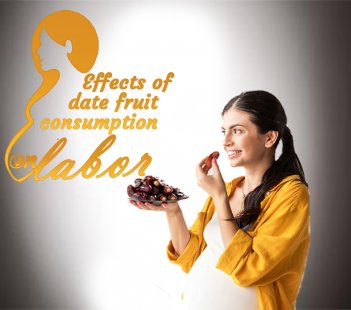
The saturated and unsaturated fatty acids, such as oleic and linoleic acids, in date fruits, play an essential part in the production of prostaglandins apart from contributing and providing energy. The increase in the levels of the latter in pregnant women causes uterine contractions during the term. Therefore, date fruit consumption can be helpful in saving energy and strengthening the uterine muscles.
The effect of dates on childbirth
The saturated and unsaturated fatty acids, such as oleic and linoleic acids, in date fruits, play an essential part in the production of prostaglandins apart from contributing and providing energy. The increase in the levels of the latter in pregnant women causes uterine contractions during the term. Therefore, date fruit consumption can be helpful in saving energy and strengthening the uterine muscles.
This fruit also contains hormones that help the uterus stretch and be prepared for infant delivery. Its consumption is helpful in storing energy and strengthening the uterine muscles. Thus, it prevents postpartum hemorrhage, spontaneous labor, and speeding up of the delivery progress.
The effect of consumption of date fruits on spontaneous labor:
According to Kordi et al. and Yusefy et al. consuming date fruits in late pregnancy have a significant role in spontaneous labor. Al-Kuran et al. reported that the duration of the latent phase of the first stage of labor was shorter in the group that consumed date fruits and that the average cervical dilation at the time of admission was significantly higher than that in the group that consumed date fruits. Date fruits affect oxytocin receptors and make the uterine muscles respond better to oxytocin, resulting in much more effective uterine contractions.
The Effect of consumption of Date Fruit on Postpartum Haemorrhage:
In a recent non-randomized clinical trial comparing date fruit to oxytocin in controlling postpartum hemorrhage, it was found that the ingestion of date fruits significantly reduced the amount of hemorrhage compared to the administration of oxytocin in the first hour following placental delivery owing to the presence of compounds in date fruits that mimicked the action of oxytocin. Drinking of water following consumption of date fruits during labor may be more effective in the promotion of labor than the administration of intravenous fluids alone. A recent study conducted in the KSA investigated the effect of eating date fruits and drinking water versus intravenous fluid administration during labor on labor and neonatal outcomes; there was a significantly shorter median duration of the second and third stages of labor in the study group than in the control group.
The effect of consumption of date fruits on labor stages:
The consumption of date fruits in late pregnancy has favorable results in shortening labor stages, without influencing labor outcomes. In a Jordanian study, the effect of late pregnancy consumption of date fruits on labor and delivery was determined to start from late weeks of pregnancy; a comparison between the two groups showed significant outcomes in cervical dilatation on admission, status of the amniotic membranes, type of onset of labor, and less need for prostin/oxytocin utilization. The study had concluded that the consumption of date fruits in the last 4 weeks before labor significantly reduced the need for induction and augmentation of labor and yielded a more favorable, but non-significant, delivery outcome.
The Effect of Consumption of Date Fruits on labor Pain Intensity
Furthermore, it was found that eating date fruits increases pain tolerance and plasma anti-oxidant capacity for 4 h.
References:
Izzaddinn E. Ahmed et al., “Effects of date fruit consumption on labor and vaginal delivery in Tabuk, KSA”, 2018
Source: “Taher Agroindustrial Group”






User comments